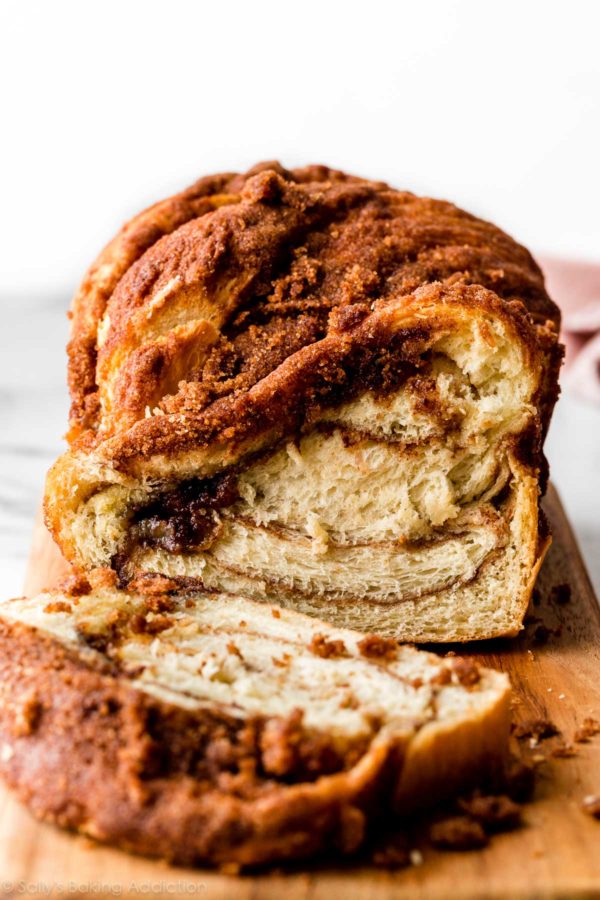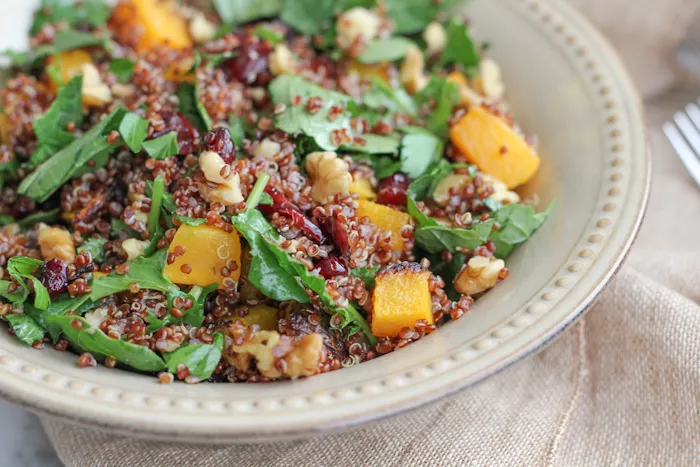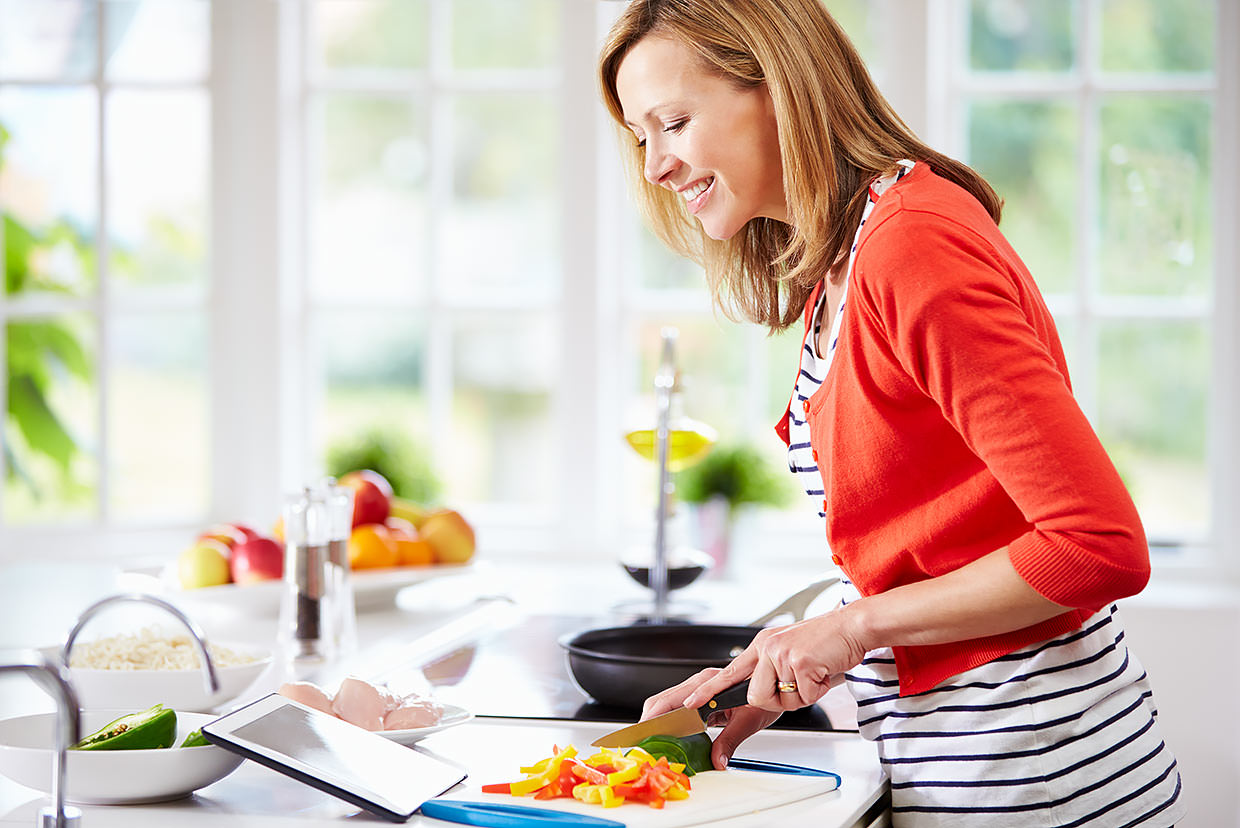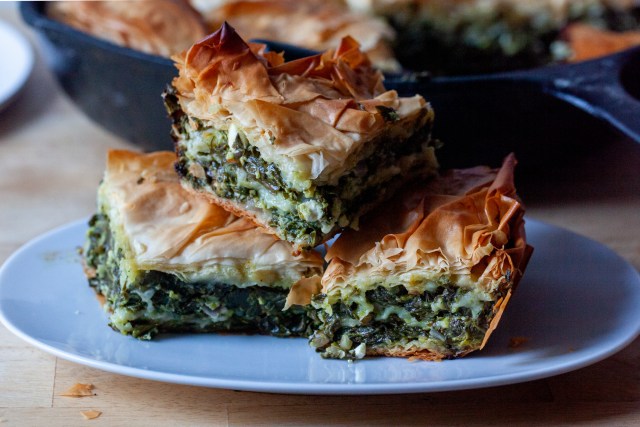Description
This is a basic soft bread dough that’s rolled, twisted, filled, and topped with butter, cinnamon, and brown sugar. It looks like a lot of ingredients but the filling and topping ingredients are mostly the same. Read the recipe before starting so you’re prepared for the rolling and twisting step.
Ingredients
- 1/2 cup (120ml) buttermilk, warmed to about 110°F
- 1/3 cup (80ml) water, warmed to about 110°F
- 2 and 1/4 teaspoons (7g) instant or active dry yeast (1 standard packet)
- 1/4 cup (50g) granulated sugar, divided
- 5 Tablespoons (72g) unsalted butter, melted + slightly cooled
- 1 large egg, at room temperature
- 1 teaspoon salt
- 3 cups (400g) bread flour (spoon & leveled), plus more as needed and for hands/work surface
Filling
- 3 Tablespoons (45g) unsalted butter, extra soft
- 1/3 cup (67g) packed light or dark brown sugar
- 1 and 1/2 teaspoons ground cinnamon
Cinnamon Crunch Topping
- 2 Tablespoons (30g) unsalted butter, melted
- 1/3 cup (67g) packed light or dark brown sugar
- 1 and 1/2 teaspoons ground cinnamon
- 2 teaspoons all-purpose flour or bread flour
Instructions
- Prepare the dough: Whisk the warm buttermilk, warm water, yeast, and 2 Tablespoons sugar together in the bowl of your stand mixer fitted with a dough hook or paddle attachment. Cover and allow to sit for 5 minutes or until foamy on top.
- Add the remaining sugar, the butter, egg, salt, and 1 cup flour. Beat on low speed for 30 seconds, scrape down the sides of the bowl with a rubber spatula, then add the remaining flour. Beat on low speed until the dough comes together and pulls away from the sides of the bowl, about 2 minutes. *If you do not own a mixer, you can mix this dough with a large wooden spoon or rubber spatula. It will take a bit of arm muscle.*
- Knead the dough: Keep the dough in the mixer and beat on low speed for an additional 2 minutes or knead by hand on a lightly floured surface for 2 minutes.
- 1st Rise: Lightly grease a large bowl with oil or nonstick spray. Place the dough in the bowl, turning it to coat all sides in the oil. Cover the bowl with aluminum foil, plastic wrap, or a clean kitchen towel. Allow the dough to rise in a relatively warm environment for 1.5-2 hours or until double in size. (I always let it rise on the counter. Takes about 2 hours. For a tiny reduction in rise time, see my answer to Where Should Dough Rise? in my Baking with Yeast Guide.)
- Grease a 9×5 inch loaf pan.
- Roll out the dough: Punch down the dough to release the air. Place dough on a lightly floured work surface and with a floured rolling pin, roll the dough out into a 9×15 inch rectangle (approximately).
- For the filling: Spread softened butter all over the top of the dough, leaving a 1/2 inch border uncovered. The softer the butter is, the easier it is to spread in this step. (Microwave it for a few seconds to soften if needed.) Mix the brown sugar and cinnamon together, then sprinkle evenly all over the butter.
- Roll and twist the dough: If you need a visual, watch the cheese bread video to see exactly how I do this step. Tightly roll the dough into a 15-inch log. Place the log on its seam. Using a sharp knife, cut the log in half lengthwise. I find a serrated knife works best. Criss-cross one half on top of the other half– forming an X. Tightly twist the two together. Pinch the outer edges to seal as best you can. Place in prepared loaf pan and cover with aluminum foil, plastic wrap, or a clean kitchen towel. (This step can get a little messy!) Allow the covered loaf to rest for 30 minutes. It will slightly rise during this time.
- Adjust the oven rack to the lower third position. Place a baking sheet on the lower rack to catch any cinnamon/sugar that may drip down. Preheat the oven to 350°F (177°C).
- For the cinnamon crunch topping: Whisk the melted butter, brown sugar, cinnamon, and flour together. Spoon over loaf right before baking.
- Bake: Bake until golden brown and, when gently tapped, the top of the loaf sounds hollow, about 45-55 minutes. The top browns quickly as it bakes, so tent the entire loaf with aluminum foil. (I usually place foil on top after about 20 minutes.) Remove finished bread the oven and place on a wire rack. Cool for 10 minutes in the pan, then remove from the pan and cool loaf on the wire rack.
- Slice and serve warm or at room temperature. Cover and store leftovers at room temperature for 2 days or in the refrigerator for up to 1 week. Leftover slices taste delicious when warmed in the microwave for 10 seconds. Topping tends to lose its crunch after a day or 2.
Notes
- Make Ahead Instructions – Overnight: Prepare the dough through step 3. Place into a greased bowl as directed in step 4. Cover the dough tightly and place in the refrigerator for up to 15 hours. Remove from the refrigerator and allow the dough to fully rise for 1-2 more hours. Continue with step 5. I don’t recommend shaping the bread the night before as it will puff up too much overnight.
- Make Ahead Instructions – Freezing: Baked bread freezes wonderfully. Wrap the cooled loaf in plastic wrap, then a layer of aluminum foil. Freeze for up to 3 months. Thaw wrapped bread overnight in the refrigerator or at room temperature, then warm to your liking. You can also freeze the bread dough. After punching down the dough in step 6, wrap the dough tightly in plastic wrap, then a layer of aluminum foil. Freeze for up to 3 months. Thaw overnight in the refrigerator, then punch the dough down again to release any air bubbles. Continue with the rest of step 6.
- Buttermilk: Buttermilk provides the softest texture and unbeatable flavor. In a pinch, you can use whole milk instead. Lower fat or nondairy milks can work too, but the bread won’t taste as moist or rich. Here are other recipes using buttermilk if you purchase a carton and need to use it up.
- Yeast: I usually use instant yeast in this dough, but you can use active dry yeast instead if needed. No changes to the recipe, except the rise time will be at least 2 hours in step 4 if using active dry yeast. Reference my Baking with Yeast Guide for answers to common yeast FAQs.
- Bread Flour: Higher protein flour like bread flour is best for this bread recipe because of its strong gluten formation and high rise. You can use all-purpose flour instead if needed, but for absolute best taste and texture, I recommend bread flour.











